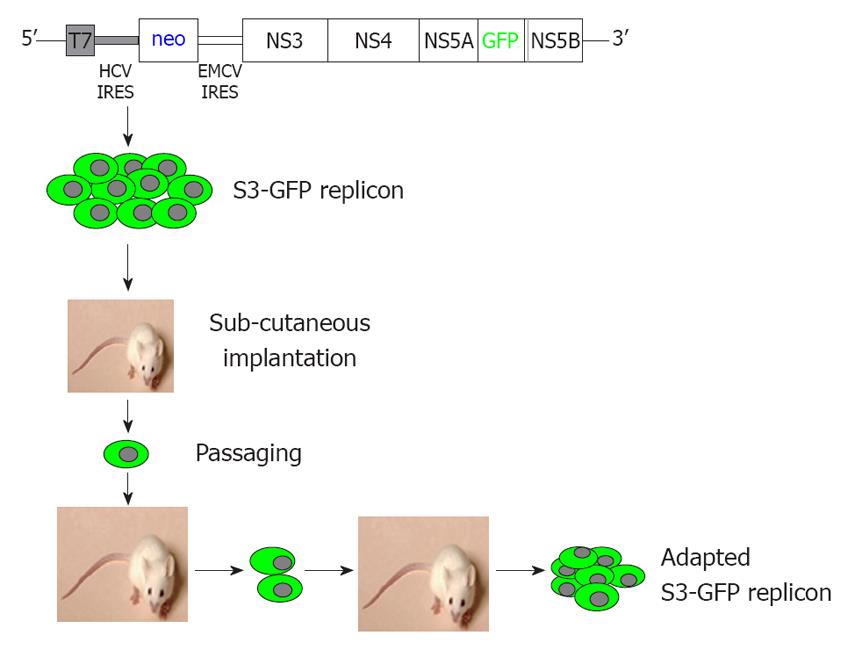Copyright
©2011 Baishideng Publishing Group Co.
World J Gastroenterol. Jan 21, 2011; 17(3): 300-312
Published online Jan 21, 2011. doi: 10.3748/wjg.v17.i3.300
Published online Jan 21, 2011. doi: 10.3748/wjg.v17.i3.300
Figure 1 Summary of overall experimental plan to generate a mouse-adapted hepatitis C virus-green fluorescence protein replicon cell line.
A chimeric replicon clone was prepared by inserting the green fluorescence protein (GFP) coding sequences with the NS5A sequences of the hepatitis C virus (HCV) sub-genomic clone. Huh-7 cells were transfected with a transcribed sub-genomic HCV-RNA replicon. A stable Huh-7 cell line with replicating HCV GFP chimera RNA (S3-GFP replicon) was developed. The replicon cell line was implanted in SCID mice for tumor development. Subcutaneous tumor that developed in SCID mice was collected and cells with replicating HCV-GFP were selected by culture in growth medium that contained G-418 (1 mg/mL). The in vivo adaptation process was repeated to generate a mouse-adapted S3-GFP replicon cell line that demonstrated 50% GFP expression in subcutaneous tumors.
- Citation: Hazari S, Hefler HJ, Chandra PK, Poat B, Gunduz F, Ooms T, Wu T, Balart LA, Dash S. Hepatocellular carcinoma xenograft supports HCV replication: A mouse model for evaluating antivirals. World J Gastroenterol 2011; 17(3): 300-312
- URL: https://www.wjgnet.com/1007-9327/full/v17/i3/300.htm
- DOI: https://dx.doi.org/10.3748/wjg.v17.i3.300









